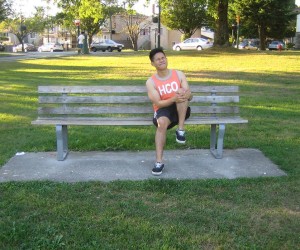Patellar tracking disorder is characterized by shifting of the kneecap or patella out of place as the leg flexes or straightens. In most instances, the patella shifts excessively forward the exterior of the leg. In some cases, it shifts toward the interior.
What are the causes?
Patellar tracking disorder is typically brought about by various combined issues such as:
- Weakened thigh muscles
Front knee pain especially when jumping, squatting, kneeling or climbing stairs. - Activities that strain the knee repeatedly particularly those with twisting motions
- Ligaments, tendons or muscles in the leg that are too taut or loose
- Traumatic injury to the knee joint particularly a blow that drives it toward the exterior side of the leg
- Issues with the structure of the knee bones or their alignment
An individual is at higher risk to have the disorder if any of these are present and overweight, playing sports that involve repeated jumping, squatting and knee bending.
Indications of patellar tracking disorder
- Front knee pain especially when jumping, squatting, kneeling or climbing stairs
- Sensation of grinding, popping, slipping or catching in the joint when bending or straightening the leg.
- Feeling that the knee is about to give away
In case the patella is fully dislocated, there is intense pain and swelling. The knee might appear as if the bone is out of place. The individual might not be able to flex or straighten the knee. If any of these symptoms are present, a doctor must be consulted. If the kneecap is dislocated, it should be restored back in place as soon as possible.
Management
Patellar tracking disorder can be an annoying condition. Luckily, most feel better after a few months of treatment. Generally, the longer the individual had this condition, the longer it takes to recover.
The treatment has 2 objectives – reducing the pain and strengthening the muscles surrounding the patella to help it stay in place. If there is no intense pain or other indications of a dislocated kneecap, home treatment can be tried for a week or two to check if the pain is reduced.
- Take a break from activities that triggered knee pain such as kneeling, squatting, jumping and running.
- Apply an ice pack on the affected knee particularly before and after activity. After 2-3 days, heat can be used if it can help.
- Over-the-counter pain medications such as naproxen or ibuprofen can be given to lower the pain and swelling.

